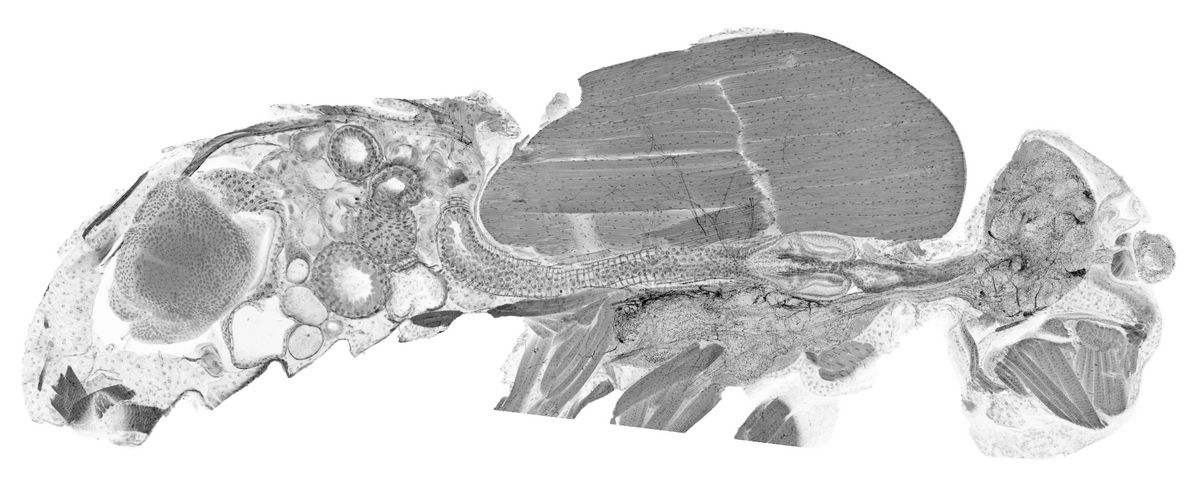The modulation of behaviour through sensory stimuli is crucial to survive in a constantly changing environment. But how do the brain and periphery interact to adapt animal behaviour to external signals and internal needs? Which modulatory mechanisms enable behavioural plasticity?
To answer these questions, we are working on the anatomical and functional description of aminergic and peptidergic neurons. These transmitters modulate neuronal networks and thus regulate and coordinate a wide variety of behaviours, such as locomotor activity and memory formation.
We use different genetic and neurophysiological methods to analyze the morphology and function of aminergic/ peptidergic neurons:
- Connectomics (FlyWire.ai)
- Ca2+- and cAMP- Imaging
- Immunohistochemistry
- Light- and electronmicroscopy
- Neurogenetics, incl. optogenetics
- Behavioural analysis
Peripheral Modulation
We have been able to show that octopaminergic neurons contact almost all sensory organs and tissues of the fruit fly (Pauls et al., 2018). This is a clear indication of a possible octopaminergic modulation of sensory networks directly in the periphery. Therefore, we are currently investigating this peripheral modulation of sensory networks.
Central Modulation
We studied the function and anatomy of octopaminergic neurons in the central brain and have been able to describe the network on single cell level. Now we use the whole-brain connectome (FlyWire) to combine our functional knowledge with the neuronal wiring to describe the modulation of neuronal networks.
Open positions
We offer projects for bachelor, master and PhD theses. Interested students are always welcome to contact Mareike Selcho.
